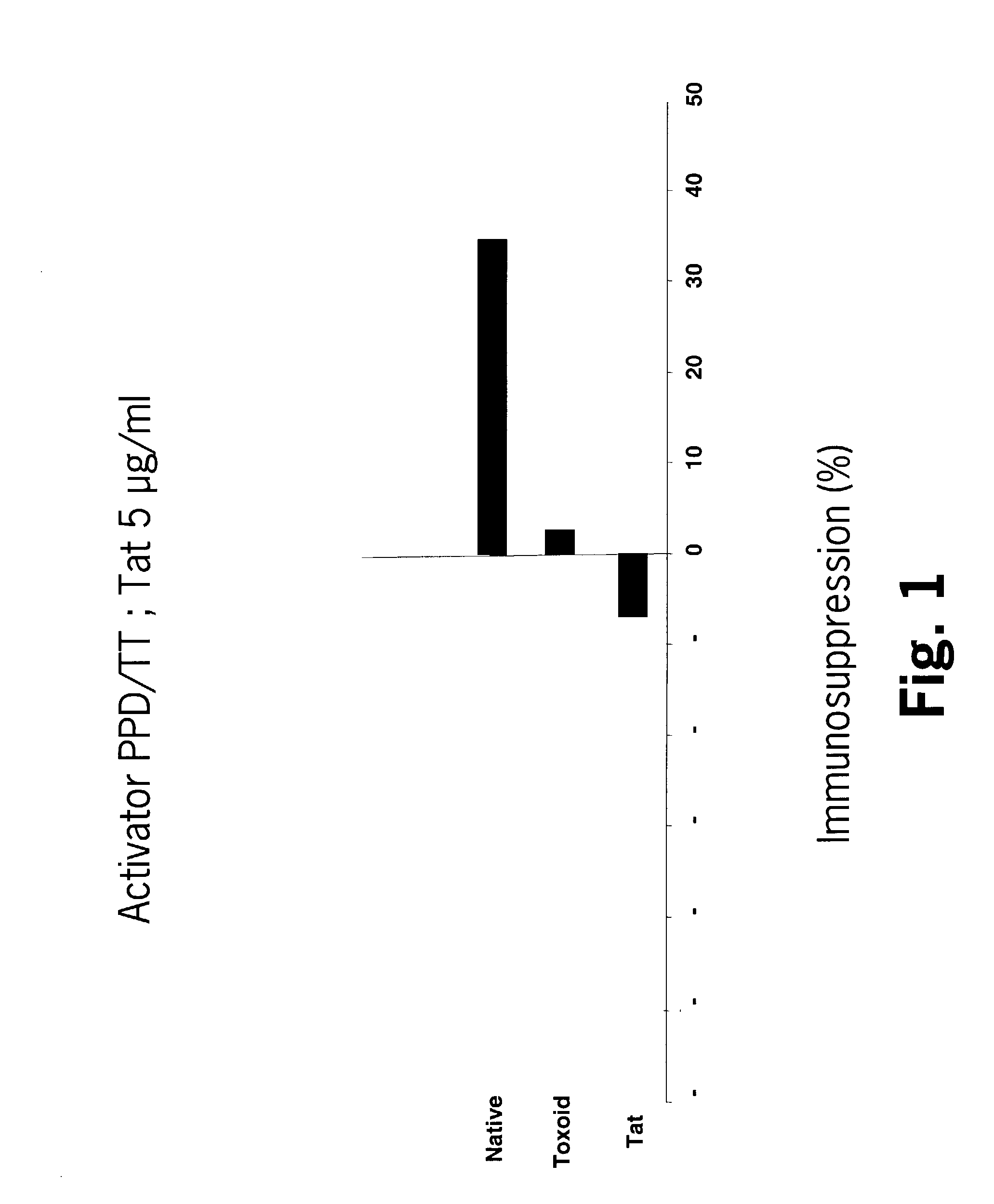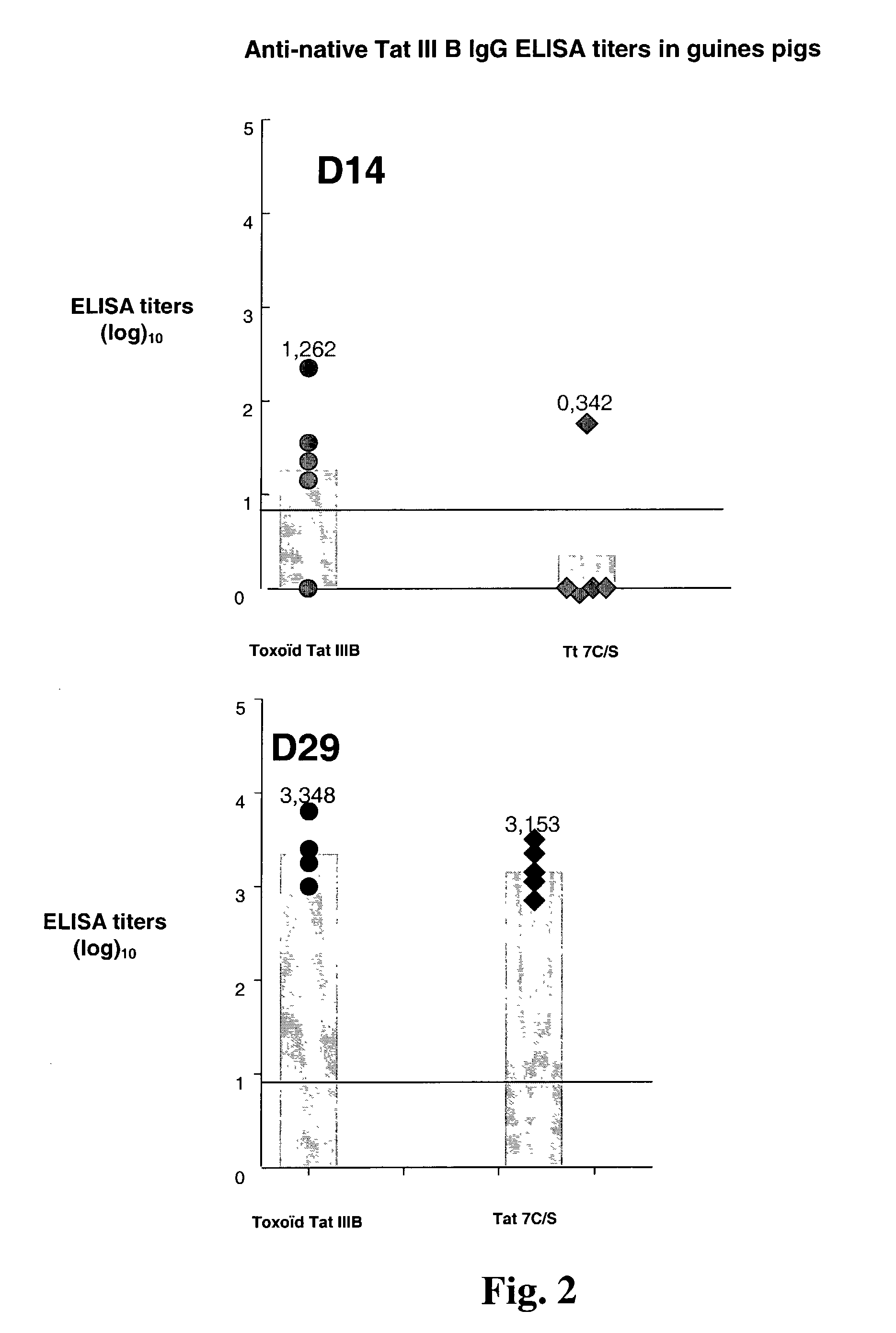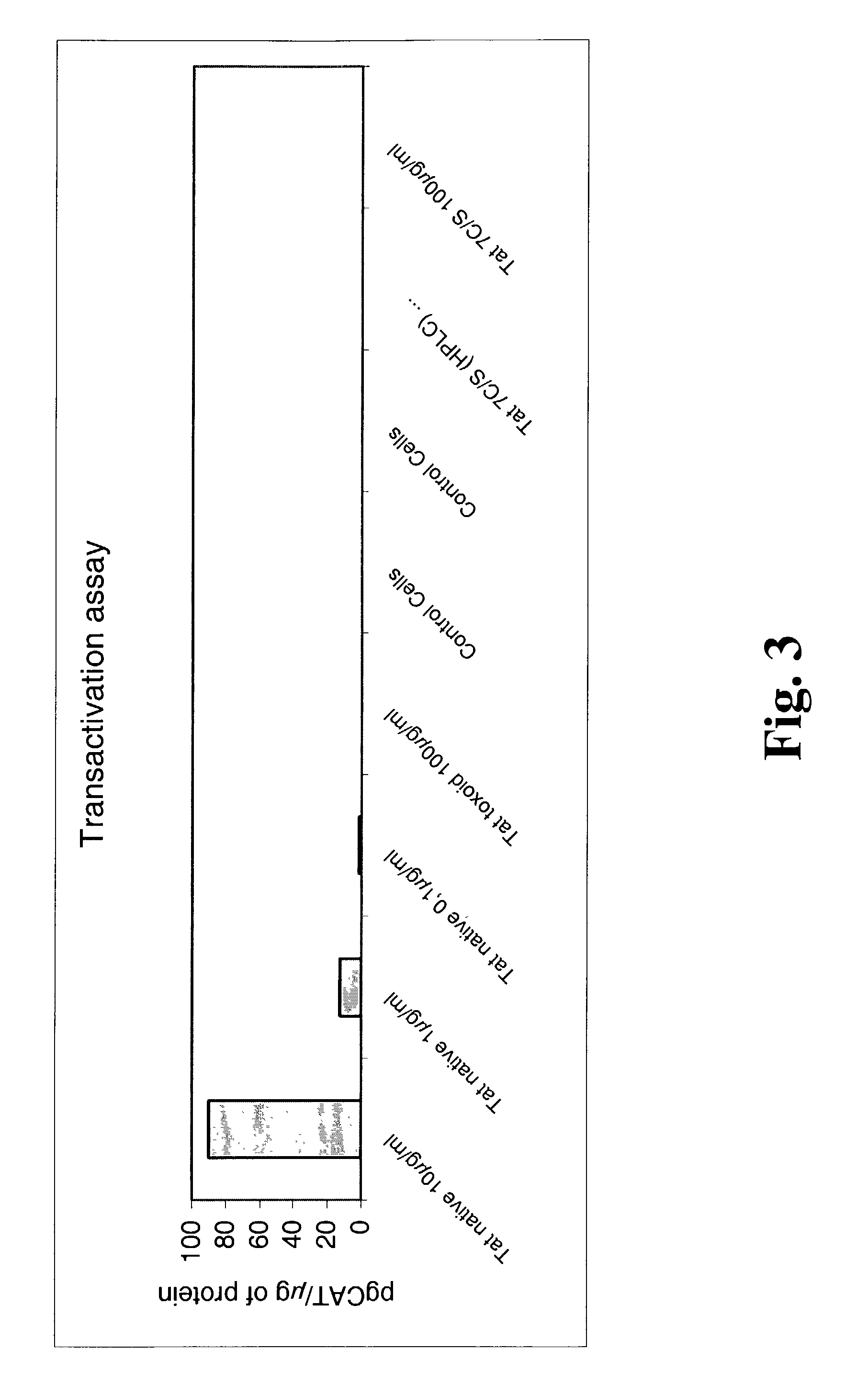Mutated HIV Tat
a technology of tat and tat, which is applied in the field of mutated hiv tat, can solve the problems that all the molecular biological mechanisms of hiv in general and tat in particular are not completely known or understood
- Summary
- Abstract
- Description
- Claims
- Application Information
AI Technical Summary
Benefits of technology
Problems solved by technology
Method used
Image
Examples
example 1
Construction of Plasmid pET8cTat7C / S
[0102] The construction of this clone involved two steps:
[0103] I the directed mutagenesis of the WT-tat gene to obtain the triple-mutant clone: Cys 30, Cys 31, Cys34.fwdarw.Ser 30, Ser 31, Ser 34.
[0104] II the directed mutagenesis of the tat-triple-mutant gene to obtain the pET8cTat7C / S plasmid.
[0105] Mutagenesis and Cloning of the Triple Mutant of Tat
[0106] We used the recombinant PCR technique to mutate the WT-tat IIIB gene. The template was the clone pET8cTat (containing Seq. ID. No. 2). The map of this plasmid is given in FIG. 5 and its entire DNA sequence is given in FIG. 6. The recombinant PCR technique requires two PCR steps.
[0107] In the first step, two PCR reactions lead to the amplification and the mutagenesis of two overlapping fragments: the "5' fragment" and the "3' fragment" of the tat gene.
[0108] In the second round, the two overlapping fragments are mixed together along with 5' and 3' primers to amplify the whole mutated tat gene....
example 2
Construction of Plasmid pM1815
[0130] The Tat7C / S gene was inserted in the plasmid pET8cTat7C / S of example 1 between the BamH1 and HindIII sites. Since the ATG start site was immediately downstream of the Bam HI site (ggatccATGg) in the pET8cTat7C / S, this created an NcoI site (CCATGG) at the translation initiation codon. This NcoI site permitted direct insertion without modification of the reading frame in the pM1800 plasmid. This gene was therefore reinserted in this plasmid between the 5'NcoI and 3'HindIII sites.
[0131] The plasmid pM1800 is constructed starting from pET28 (Novagen). pET28c was amplified by PCR using two primers flanking either side of the region corresponding to the origin f1. The product thus amplified corresponds comprises the whole sequence of the vector with the exception of the region comprising origin f1. The two restriction sites Asc I and Pac I are introduced via the two primers used in the PCR reaction. In parallel the cer fragment is amplified using two p...
example 3
Fermentation, Bacterial Cell Lysis and Protein Purification
[0137] A seed vial of pM1815 is used to inoculate, a pre-culture of E. coli BL21 (XDE3) (in Erlenmeyer flask containing the LB2X medium. After 15 h to 18 h agitation at 37.degree. C., the whole content of the flask is added to 20 L of GluSKYE4 medium (yeast extract, salts and glucose) in a 30L B. Braun fermenter. When the initial growth phase reaches cell density up to A.sub.600 of 30.+-.5, the synthesis of the Tat protein IIIB 7C / S is induced by the addition of an inducer (IPTG 1 mM final). The culture is still maintained for 3 hours under agitation at 37.degree. C. and then the medium is chilled down to 10.degree. C. before cell harvesting. The cells are collected by centrifugation and stored at <-35.degree. C.
2 Thawing of bacterial paste (15 g) Cellular paste thawed for 1 night at 5 .+-. 3.degree. C. .dwnarw. Suspension and homogenization In a buffer of 50 mM Tris-HCl, 0.2 M NaCl, benzonase* 5 Ul / ml, pH 8.0 in an ice bath...
PUM
| Property | Measurement | Unit |
|---|---|---|
| pressure | aaaaa | aaaaa |
| pressure | aaaaa | aaaaa |
| pH | aaaaa | aaaaa |
Abstract
Description
Claims
Application Information
 Login to View More
Login to View More - R&D
- Intellectual Property
- Life Sciences
- Materials
- Tech Scout
- Unparalleled Data Quality
- Higher Quality Content
- 60% Fewer Hallucinations
Browse by: Latest US Patents, China's latest patents, Technical Efficacy Thesaurus, Application Domain, Technology Topic, Popular Technical Reports.
© 2025 PatSnap. All rights reserved.Legal|Privacy policy|Modern Slavery Act Transparency Statement|Sitemap|About US| Contact US: help@patsnap.com



